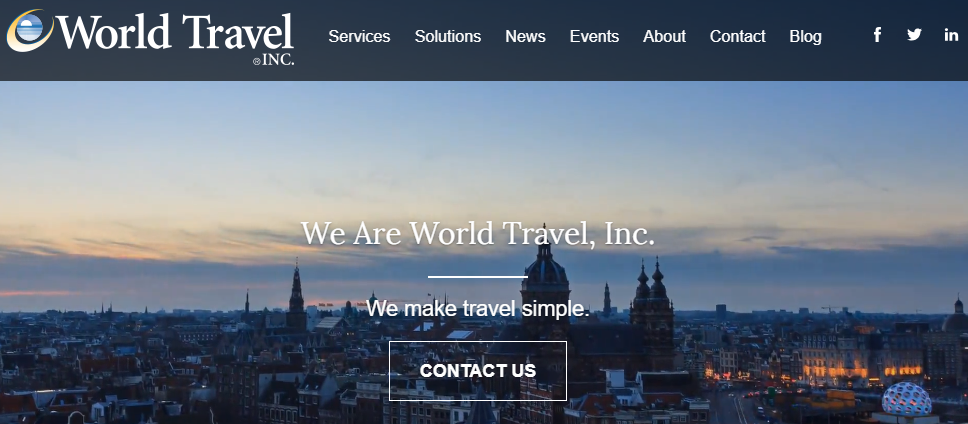Abstract
The development of communication and information technologies promoted the appearance of hypertext as a new way of communication and organizing information in a new computer environment. Nowadays, hypertext is the main object of study not only in linguistics, but also in other sciences. This aspect of hypertext studying makes it difficult to give a full definition of this term. The paper discusses the definition of hypertext as the form of electronic text and the hypertext space as the basis of hypertext. Hypertext is a complex structural data array; its internal integrity is supported by special structures (hyperlinks). The analysis of hypertext space on the example of touristic website allowed us to reveal the structure of hypertext space. It consists of navigational, presentational-informative and informative-interactive blocks. The right filling of these blocks with required hypertext elements helps the user to improve its navigation and understanding in the frames of the whole hypertext. Correct composition of hypertext space is the guarantee of right perception of hypertext itself.
Keywords: Blocks of hypertext spacehypertexthypertext spacehypertext space structureWorld Travel Inc
Introduction
Hypertext studying can be considered a relatively new direction in linguistics. The theoretical ground of hypertext was formed in the second half of 20th century. This phenomenon was the most popular object of linguistic researches in the 1990s, and it still remains one of the topical problems in modern linguistics. The main reason for the relevance of hypertext study is the development of information and computer technologies, and particularly the emergence of a personal computer and World Wide Web. All this allowed the process of communication to move to a new computer environment where its process can take new forms. Hypertext is one of these forms (Kolykhalova & Sapukh, 2017).
But at the same time, the definition of hypertext is still remaining a problem. The main reason for this is that today hypertext has become the object of a study to other sciences, which supplements this definition with its own specifics. Another moment worth noting is that now hypertext is more connected with programming theory and web development, what is repeatedly emphasized by researchers.
The paper is structured as follows. In introduction we substantiate the relevance of hypertext studying in modern linguistics. In research sections
Problem Statement
The idea of a hypertext system was introduced by Vannevar Bush in 1945 in his paper “As We May Think”. In his reflections about necessity and difficulties in saving increasing volume of research results he suggests the idea of special device “Memex” which would allow to store all necessary information in clearly structured form. The author also pointed out, that Memex could become an input device, which could provide entering, storing and distributing of information. Practically, Memex can be considered as a prototype of a computer (Modir, Guan, & Bin Abdul Aziz, 2014; Barnet, 2013).
The term "hypertext" was coined by Nelson (1965) and formed the basis of his Xanadu project. Nelson (1965) defines hypertext as “body of written or pictorial material interconnected in such a complex way that it could not conveniently be presented or represented on paper” (Nikiforova, 2015, p. 88). This concept has found its practical implementation in the hypertext systems HES and FRESS, developed by Nelson (1965) and Van Dam (1988). Another practical implementation of hypertext is the NLS project by D. Engelbart which he represented in the late 60s (Barnet, 2013). Landow (2006) points out that some aspects of the philosophy of postmodernism influenced on the ideas of hypertext formation. The “World Wide Web” project by Berners-Lee (1990), developed in the late 80s, has become a practical example of organized hypertext with special methods of its reading and navigation.
According to Dedova (2003), some researches often use hypertext for its definition in “paper” (literature) and electronic forms. And at the same time, they do not take into account the fact that this term is used not only in linguistics, and that erases all the differences between these types of text despite their similarities. Dedova (2003) offers a definition of “electronic hypertext”, which she defines as the model of electronic hypertext’s organizational formation with specific structure of inline and intertext transitions, which allows the reader to choose the order of reading its compositional units.
In our opinion, within the theme of this research Dedova’s (2003) definition is the fullest reflection of hypertext’s characteristics represented in the electronic environment. In connection with this aspect we submit the following definition of this term: hypertext is a complex structural data array, its internal integrity is supported by special structures (hyperlinks). This data array is better to present in the electronic environment.
The main characteristics of hypertext are its nonlinearity, anthropocentricity and discreteness (Dmitrieva, 2017). Other equally important hypertext characteristics are the changing of author’s place (author multiplicity, absence of the author and indistinct limits between author and reader), interactivity, virtuality, multimedia, openness and availability (Proshina & Emelina, 2017).
We define the term “hypertext space” as a method of organization and representation of hypertext based on interaction of textual, graphic and multimedia objects, which are included in the hypertext structure via hyperlinks.
On the example of website Terentyeva (2016) points out that hypertext space should be based on the following aspects. Website should be the most informative and easy for navigation, and stimulate a user to purchasing of goods or services (Terentyeva, 2016). Author highlights the following connected parts of hypertext space: presentational, descriptive-informative and informative-interactive (Terentyeva, 2015).
We suggest the next organizational structure for hypertext space, which is based on Terentyeva’s (2015) scheme. It includes three blocks: navigational, presentational-informative and informative-interactive. A detailed organization and functioning of it will be analyzed further
Research Questions
We are interested in the way the hypertext space is structured and organized. The problem that demands our special consideration is how the organizational blocks of hypertext space on the example of touristic website function to help the user improve its navigation and to guarantee of right perception of hypertext itself.
Purpose of the Study
The purpose of the study is to analyze the organizational structure for hypertext space on the example of World Travel Inc. website.
Research Methods
The methods of this research have been chosen with taking into consideration the main objective – the analysis of hypertext space. Scientific methods involve: analysis and synthesis of the content of theoretical literature, comparative analysis and interpretation of the results.
Findings
To analyze the structure of the hypertext space, we have chosen the site of the American travel company World Travel Inc. (worldtravelinc.com) which offers visitors assistance in organizing business trips, various events, group tours and trips. In our view, touristic websites are characterized by the greatest variety of elements that allow forming the right idea about the whole company and the services it offers.
Let us consider the main blocks of this hypertext space.
1.

The main navigation menu allows the user to find more information about company’s services, its latest news and management structure. The slideshow of animated objects is an illustration of the company’s services.
2.

3.
Uniformity of the presented hypertext’s space elements is the main peculiar feature of this website. Hyperlinks are mainly presented in the form of decorated text and rarely in the form of images-icons. Most of presented images of this site act not as hyperlinks but as additional illustrations of the company’s services. Interactive forms activated by special links are opened in a new browser tab but not in a pop-up window on the current page of the site. The design of the website reflects the company’s specificity and at the same time it represented in “classic” variant where the accent is made on the text and images and not on interactive elements.

Therefore, the main features of this hypertext space are the uniformity of its structural units, easy navigation and the traditional design.
Hypertext space is the base of the whole hypertext and its structure should be strictly taken into account in the writing of hypertext. The right filling of navigational, presentational-informative and informative-navigational blocks will simplify the navigation and reading of hypertext and help the user (reader) to quickly navigate in a complex hypertext with branched structure.
Conclusion
In conclusion we should state that nowadays hypertext is the main way to present any kind of complex information. Website as the most acceptable example of hypertext is a new way of text organizing with a complex structure of transition. Hypertext space is the base of the whole hypertext and correctness of its perception depends on the correct organizational structure that is the guarantee of the right perception of the hypertext itself.
References
- Barnet, B. (2013). Memory machines: the evolution of hypertext. London-New York: Anthem Press.
- Berners-Lee, T. (1990). WorldWideWeb: Proposal for a HyperText Project. Retrieved from https://www.w3.org/Proposal (access date: 19.09.18)
- Dedova, O. V. (2003). O gipertekstah «knizhnyh» i «elektronnyh» [“Paper” and electronic hypertexts]. Vestn. Mosk.un-ta. Ser. 9, Filologiya [MSU Vestnik], 3, 106-120.
- Dmitrieva, E. V. (2017). Strukturno-semanticheskie osobennosti gipertekstovogo soderzhimogo novostnogo portala (na primere setevogo izdaniya CNN) Structural and semantic features of the hypertext content of the news portal (on example of the CNN network edition) // Voprosy obshchego yazykoznaniya i teorii teksta [Questions of general linguistics and text theory], 26-33.
- Kolykhalova, A. O., & Sapukh, T. V. (2017). Analiz gipertekstovogo I giperssylochnogo prostranstva sajta "Priceline Group" [Analysis of hypertext and hyperlink space of website “Priceline Group”]. Sovremennye issledovaniya social'nyh problem [Modern Research of Social Problems], 4-3, 69-75.
- Landow, G. (2006). Hypertext 3.0: critical theory and new media in an era of globalization. Baltimore: The John Hopkins University Press.
- Modir, L., Guan L., & Bin Abdul Aziz, S. (2014). Text, Hypertext, and Hyperfiction. SAGE Open, 1-8.
- Nelson, T. (1965). A File Structure for the Complex, the Changing, and the Indeterminate Retrieved from https://ru.scribd.com/document/454074/A-File-Structure-for-the-Complex-The-Changing-And-the-Indeterminate (access date: 10.11.2018)
- Nikiforova, J. A. (2015). K problem opredeleniya ponyatiya «gipertekst» [The problem of defining the term “hypertext”]. In Gipertekst kak ob"ekt lingvisticheskogo issledovaniya [Hypertext as an object of linguistic research] (pp. 87-95). Samara: Samara State University of Social Sciences and Education.
- Proshina, A. V., & Emelina, M. V. (2017). Osobennosti giperteksta [The peculiarities of hypertext]. Interaktivnaya nauka [Interactive science], 12, 167-171.
- Terentyeva, E. B. (2015). Strukturno-kompozicionnaya organizaciya gipertekstovogo prostranstva angloyazychnyh sajtov restoranov [Structural and compositional organization of hypertext space of English restaurants websites]. Grani poznaniya [Verges of knowledge], 5, 103-105.
- Terentyeva, E. B. (2016). Lingvopragmaticheskij potencial angloyazychnyh sajtov restoranov [Linguopragmatic potential of English restaurants websites]. Mir nauki, kul'tury, obrazovaniya [The world of science, culture and education], 1, 315-320.
- Van Dam, A. (1988). Hypertext ‘87 Keynote Address. Communications of the ACM , 31(7), 887-895.
- World Travel (n. d.). Retrieved August, 10, 2019 from: Inc. http://www.worldtravelinc.com
Copyright information

This work is licensed under a Creative Commons Attribution-NonCommercial-NoDerivatives 4.0 International License.
About this article
Publication Date
20 April 2020
Article Doi
eBook ISBN
978-1-80296-082-2
Publisher
European Publisher
Volume
83
Print ISBN (optional)
-
Edition Number
1st Edition
Pages
1-787
Subjects
Discourse analysis, translation, linguistics, interpretation, cognition, cognitive psychology
Cite this article as:
Kolykhalova, A. O., & Sapukh, T. V. (2020). Organizational Structure Of Hypertext Space (On The Example Of World Travel Inc. Website). In A. Pavlova (Ed.), Philological Readings, vol 83. European Proceedings of Social and Behavioural Sciences (pp. 688-693). European Publisher. https://doi.org/10.15405/epsbs.2020.04.02.80
